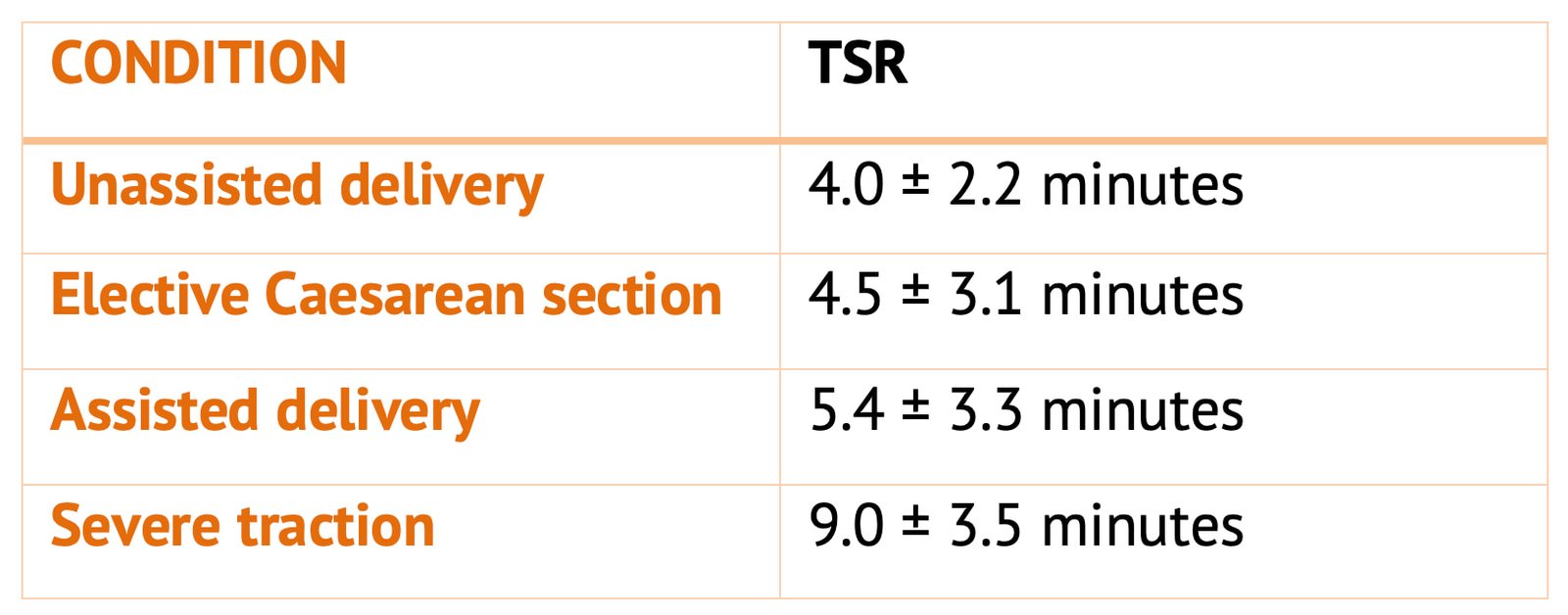TABLE OF CONTENTS
Care of a Newborn Calf
Proper care of a newborn calf is crucial for its survival and long-term health. Immediately after birth, the calf should be cleaned, and its airways cleared to ensure proper breathing.
During intrauterine life, the fetus is nursed entirely by the dam. At birth, the maternal connections are severed due to rupture of umbilical cord resulting in cessation of nutrient and oxygen supply to fetus.
Following delivery the calf must rapidly adapt an extrauterine existence in order to cope with variety of environmental conditions.
Resuscitation of the Calf
Clearing the Airways
Remove the amnion that may be wrapped around the muzzle and nose region which may cause asphyxiation.
The onset of fetal respiration may begin before the fetus is completely expelled in some parturition, especially that are delayed. In normal parturitions, the refractory movements are initiated by several deep inspirations about 10-60 seconds after expulsion. In foal this will happen before the umbilical cord has ruptured.
If respiration is delayed various procedures should be used t stimulate this activity. The mucus should be removed from nose and mouth.
The newborn should be laid on its side on straw with the head and forequarters lower than the hind quarters. Vigorous rubbing of newborn or shaking its head or tickling its nostrils will help bring about respiratory activity. The uses of oxygen tank with attached rubber tube have proven useful in saving weak newborns.
Alternatively the calf may briefly suspend by its hind legs from a convenient beam or swing over like a pendulum fashion.
Fetal Heart Beats
Check for the visible or palpable apex beat of heart. Check for vital signs including palpebral reflex and spontaneous movement.
If there are no vital signs, an attempt of external cardiac massage or an intracardiac injection of adrenaline may be tried. Auscultate the chest for any evidence of cardiac activity.
Establishment of Respiration when Heart is Beating
if spontaneous respiration is not present even after stimulation by pinching the fetal nose or feet, pricking nasal filtrum, splashing cold water on head 40-100mg doxapram Hcl by intravenous injection or sublingual application is recommended.
The distended jugular vein is usually visible in the neonatal calf. The calf should normally take its first breath within 30 seconds. After the first breath there may be period of apnea and providing the mucus membrane colour is good and the heart beat strong.
Oxygen therapy can be supplied by facemask or endotracheal tube. It may be possible to aid fetal intubation by holding the larynx between the finger and thumb of one hand and passing the tube over the tongue to be inserted into the stabilized larynx.
Inflation of the fetal lungs using an oesophageal tube: in absence of endotracheal tube or if attempts to intubate the calf fail, this technique can be tried. A small stomach tube is passed into the calf oesophagus.
Applying positive pressure through this will dilate the calf’s abomasum but not inflate its lungs. The oesophagus is obstructed distal to the end of tube by compressing it between the finger and thumb.
The calf’s mouth is closed and its nostrils are covered. Air or oxygen is blow into the stomach tube. The gas unable to pass into the abomasums or escape through the mouth or nostrils.
Artificial Respiration
The upper chest wall is raised and lowered, holding it by the humerous and the last rib. Excessive pressure should not be applied externally to the ribs because of possibility of fracture or damage to the organs.
Breathing Difficulties
Hyperpnea or dyspnea may indicate dysmaturity of the fetal lungs or possibly a severe life threatening cardiac anomaly.
The most common cardiac anomaly is ventricular septal defect. Persistent patent ductus arteriosus is less commonly encountered.
Dyspnea may also be indications of severe blood loss from the umbilical vessels or internal damage to chest or abdomen sustained during delivery.
Management of Acidosis
The fetus at the time of birth will usually have a mild metabolic and respiratory acisosis.
Dystocia is likely to cause a severe respiratory and metabolic acidosis. Severe acidosis has an adverse effect on both respiratory and cardiac function.
Signs of Acidosis
- Abdominal breathing
- Low heart rate
- Prolonged jugular filling time
- Poor body muscle tone
- Absence of pedal reflex
- Time to attain sternal recumbency (TSR) is >15 minutes
TSR of Calf in Different Conditions

If TSR is if > 15 minutes is an ominous sign of severe acidosis.
If no spontaneous improvement, administration of 250-400 ml of 4.2 percent sodium bicarbonate by slow intravenous injection is recommended.
Effects of Acidosis
- Poor colostrums uptake
- Shortening of the period during which the calf is normally able to absorb antibodies
- Abomasal atony
- General dullness
- Reluctance to move
- Inability to suck the milk
Prevention of Umbilical Infection
If the umbilical cord is not ruptured, it should be ligated at about 2 inches from the umbilicus and severed with scissors and the stump should be cleaned with antiseptic. The naval cord should not be tied but allowed to drain if bleeding is not so profuse.
To this stump, tincture iodine should be applied. The ligation should be removed within 12-24 hours.
Thermoregulation
- Thermoregulation in the new born can be improved in a number of ways.
- Ensure that there is adequate milk intake.
- Arrange the birth to occur in thermally neutral environments as far as possible.
- Newborn puppy should be placed in an environmental temperature of 30-33 degree C for the first 24 hours, which can be reduced to 26-30 degree C by 3 days.
- The new born coat should be adequately and quickly dried.
- Suitable jacket should be provided in winter.
Colostrums Feeding
The young one should get first colostrums within first two hours after birth.
In case colostrums is not available, 200-500 ml of dams blood or serum should be injected subcutaneously to young one of large animal and in smaller animals, 20-100 ml to their young ones.
Persistent Urachus
Persistent urachus is characterised by continuous dribbling of urine through urachus; cauterize the affected part with tincture iodine.
Retained Meconium
The meconium may be retained. In such cases, the new born shows colic symptoms and lack appetite. The enema of saline, soap and water or glycerine or castor oil should be given in this condition.
Milk Feeding
The rate of milk feeding should be about 10% of the calf’s weight per day up to a maximum of 5-6 litre/day.
The domestic animals new born differ in selectivity and duration of their intestinal permeability.
In horse and pig, protein absorption is selective, IgG and IgM are preferentially absorbed and IgA mainly remains in the intestine while in ruminants all classes of immunoglobulin are absorbed non selectively).
Inspection of Natural Orifices
The new born should be examined carefully to ascertain that all the natural orifices are patent and if not a timely surgical intervention is necessary.
Regular vaccination.
Dehorn the calf at an early stage preferably within 15 days.

